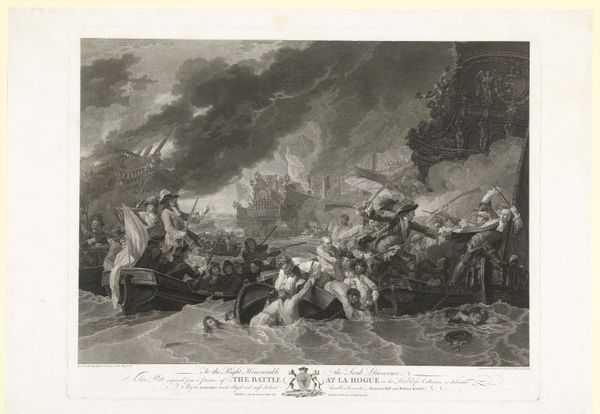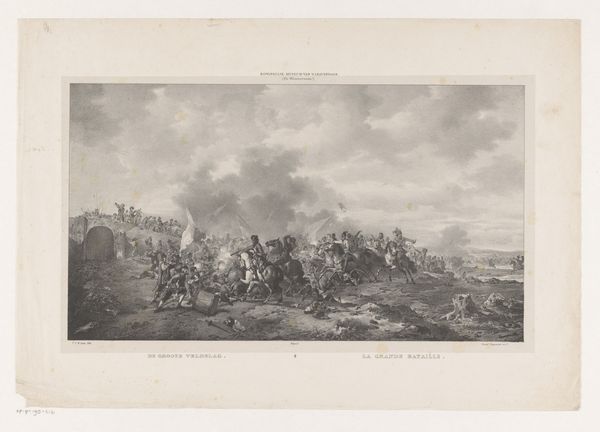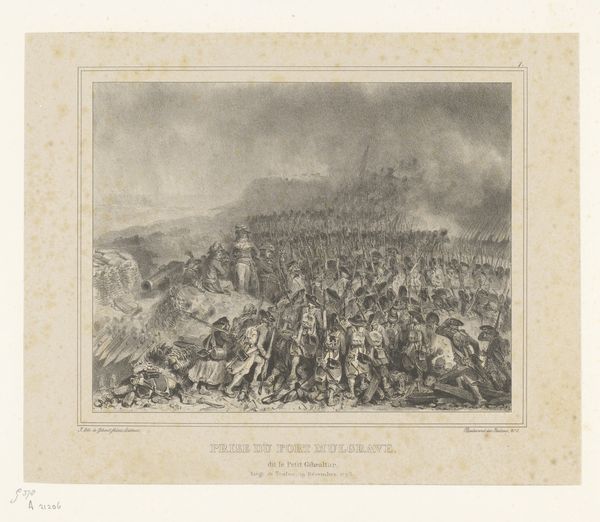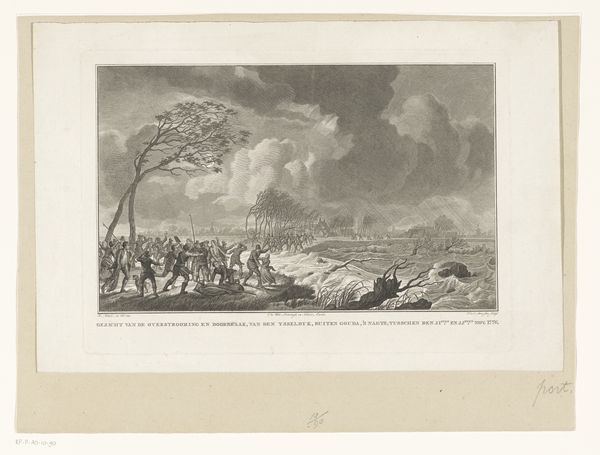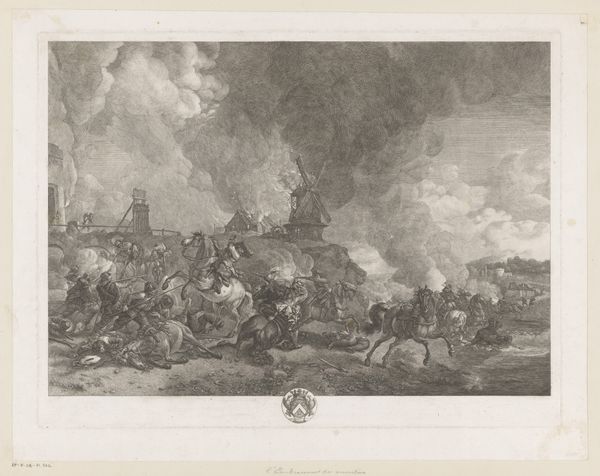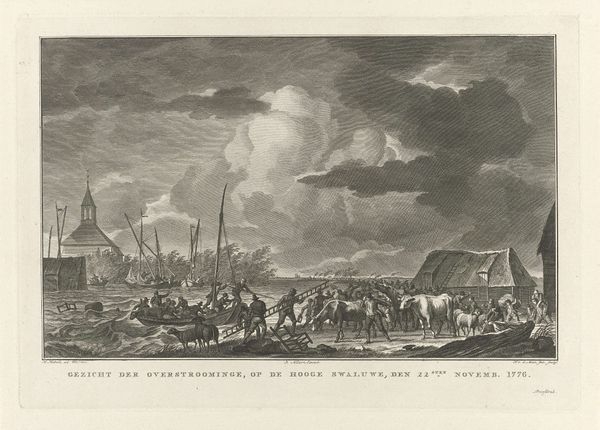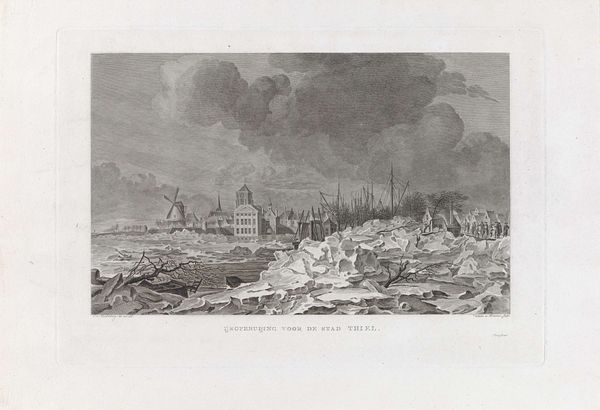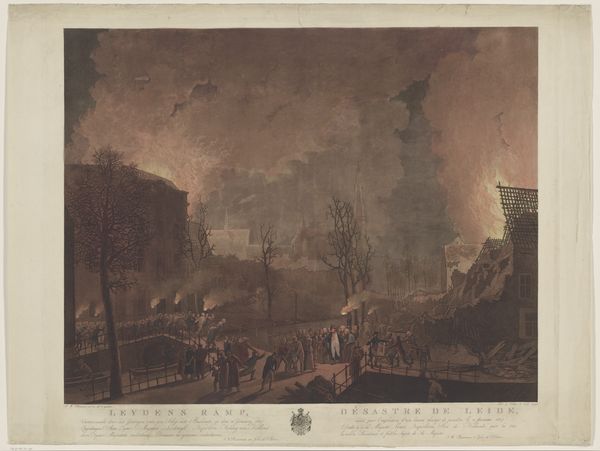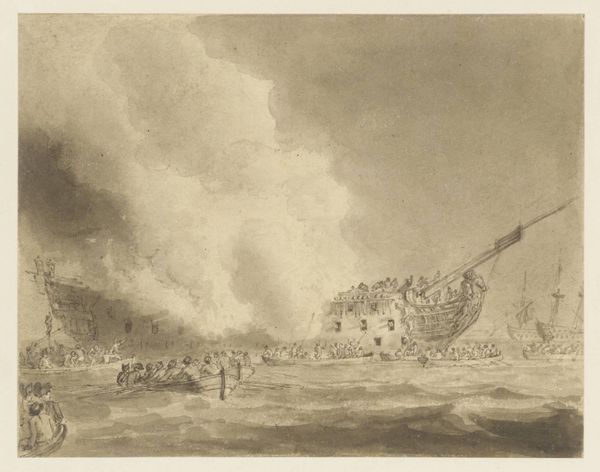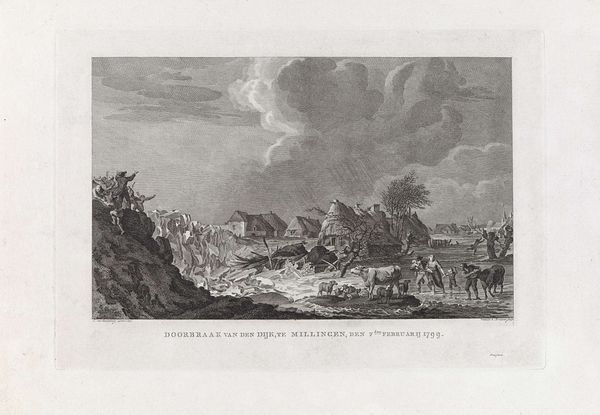
Dimensions: height 496 mm, width 694 mm
Copyright: Rijks Museum: Open Domain
Curator: Here we have John Emes’ engraving from 1789, “Spaanse scheepswrakken en drenkelingen voor Gibraltar, 1782"—or Spanish Shipwrecks and Drowning People Before Gibraltar. It commemorates the failed Spanish attack. What strikes you first about it? Editor: Utter chaos. A kind of swirling dread, caught in monochrome. It feels epic, operatic almost, but undeniably tragic. So many desperate figures... it's as if the sea itself is a character, hungry and unforgiving. Curator: Absolutely. Emes renders the sheer labor and scale of the maritime disaster meticulously, doesn't he? The chaotic sea is almost a stage—where craftsmanship of the ships meets its tragic end and where human struggle takes centre stage amidst remnants of warfare and imperial ambitions. Editor: Indeed. The printmaking itself seems almost overwhelmed by its subject. I mean, look at the level of detail! The ropes, the splintered wood, the churning water... Someone painstakingly transferred this nightmare into lines on a plate, pressed into paper. Makes you think about the labor, not just in the depicted disaster, but in the making of this image about that disaster. Curator: And I find that particularly fascinating here. In the Baroque landscape style, you expect drama, theatricality—but Emes adds this layer of observation, that pulls it away from simple spectacle. Each individual body seems to express a different facet of fear and survival...I wonder what possessed them in those final moments. Editor: Yes, it reminds us that images, even seemingly objective ones like this engraving, are always produced under specific conditions, carrying the marks of the historical moment and the artisan’s skill and sensibility. Consider too the distribution, a single image spread wide carrying a single narrative... Curator: Exactly. This engraving reduces this devastating naval battle into this singular moment for the consumer. The level of detail implies documentary value. Yet, we're also viewing a spectacle, carefully composed and reproduced to influence opinion, likely serving the victors narrative after all. The act of engraving itself here… It's like memorializing something unspeakable by way of intense manual processes and choices. Editor: It leaves one to ponder the sheer physical presence, this object that witnessed and retells this awful narrative across eras. In it there's a quiet rebellion. From what are humans constructing; to what do we put to its end and eventually reconstruct as images. A compelling end indeed. Curator: Beautifully put. It’s truly astonishing, what artisans are capable of even as their choices are guided.
Comments
No comments
Be the first to comment and join the conversation on the ultimate creative platform.
